Play 1 – Anchoring on Applications, Bringing in Business Elements
When someone takes Essential, our Enterprise Architecture Management Tool, we are often asked where we would recommend that they start with their EA. Being Enterprise Architect’s, our answer usually starts with “It depends…….”!! But in truth, it really does depend. The two key factors that need to be considered are; where are the biggest ‘fires’ in the organisation, i.e. what is everyone concerned about/shouting about, and what information can you get hold of quickly?
The first thing to understand is who your key stakeholder is and what is keeping them awake at night. If you can provide information that will support the decision analysis around this area, then that is a great start. The second is to understand the information and data you will need to capture in order to enable this – if you can utilise data you already have access to, wherever and however that is held, then you can respond really quickly, in a matter of weeks.
In this series of blogs, we’re going to look at common scenarios that we encounter and the initial steps we recommend.
The scenario we encounter most frequently is the organisation that has grown organically with a federated approach or through mergers and acquisitions. In both cases we often find that there is a push for application rationalisation to provide efficiencies through both cost saving and speeding up IT’s ability to respond to the business needs. However, this is often hindered by the lack of visibility of IT assets across the organisation and how they support the business.
Below are condensed extracts from our EA Playbook that describe how to manage this scenario and to achieve a positive outcome. The playbook assumes you have a target state defined for your IT estate, so you know where you are going, and against which you can anchor your work.
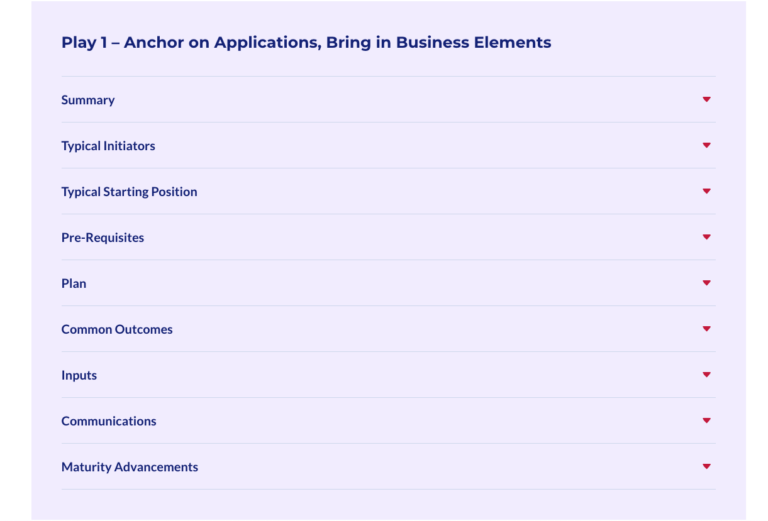
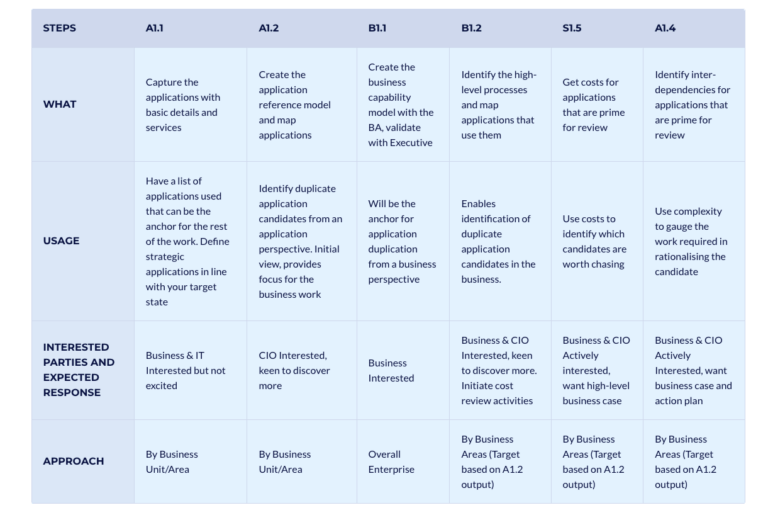
Where to Start
Before you start, the key things to note here are the pre-requisites to starting the play; it is imperative that you have the support of a senior leader and that they communicate to the IT Teams, and also that you have access to a friendly business contact with excellent knowledge of the business. Once you can corral the data to produce an application list with the links to the business overlaid, you should expect to be able to engage both the CIO and the business leaders in conversations about exactly where efficiency opportunities exist. By presenting your architecture models in a non-technical way that can engage senior leaders, they will be able to see clearly where there is duplication and understand why application X costs them more and why application Y slows them down. Identifying the ‘low hanging fruit’ in terms of cost savings can provide a springboard for moving forward in allowing IT to become a true partner with whom the business want to engage to meet their strategic business goals.
The approach we’d suggest is:
- Publish an up to date application catalogue
- Engage the CIO by using the application catalogue as an anchor to create an application reference model and then identify duplication within the application estate from a capability perspective
- Engage with your business contact to overlay the business view and identify potential duplication from a business perspective. Start with one business area and complete that first as a demonstrator
- Bring in costs for those areas of interest, i.e. where there is application duplication
- Start to understand complexity of integration for those high priority candidate applications
Some of the key Essential views that support this approach are:
Business Capability Dashboard
(See live view demo here)
Key business architecture view showing how applications map to business capabilities, with Strategic Goals and Objectives and Roadmap Overlays.
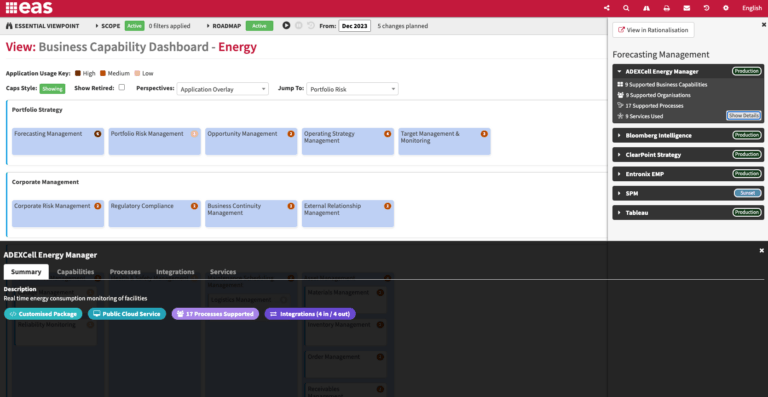
Application Reference Model
(See live view demo here)
Shows Application Capabilities and Services, with Applications mapped. Highlights duplication across application services.
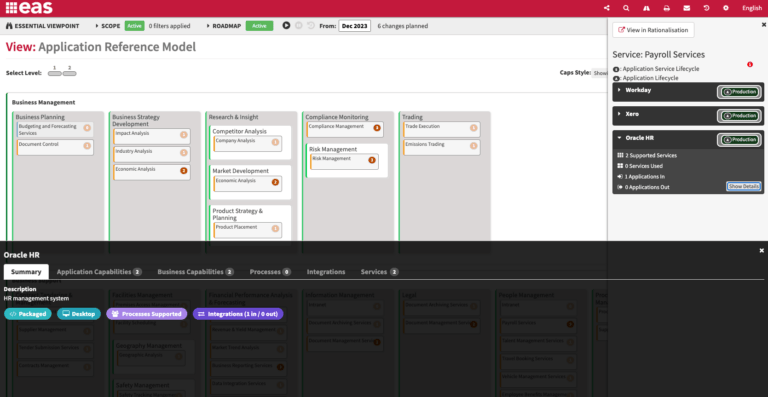
Application Rationalisation Analysis
(See live view demo here)
Displays opportunities for rationalisation across applications and application services, with various filters for specific criteria.
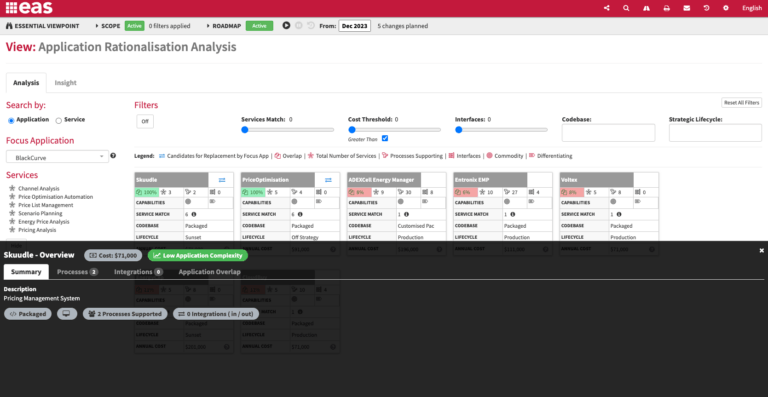
Business Process Family Summary
(See live view demo here)
Shows all the business processes contained in a process family, including performing organisations and applications used. Highlights where there are non-standard processes and different supporting applications used across the organisation, supporting the identification of opportunities to re-engineer and automate processes.
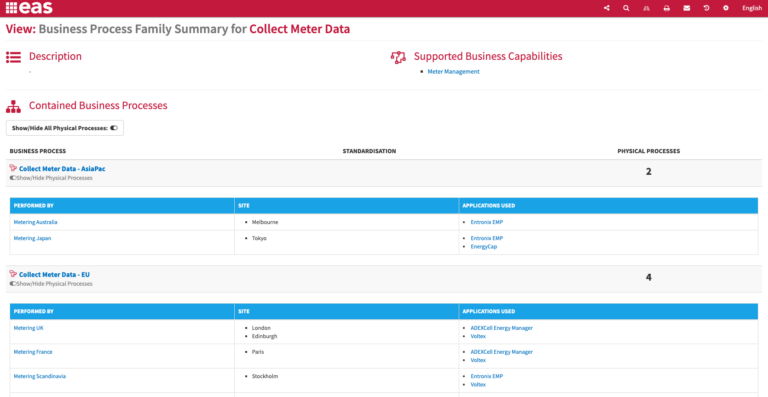
We’ll be publishing extracts covering different scenarios on a regularly.
Further details on the scenarios and playbooks can be found on our website here, or contact us to discuss here.
